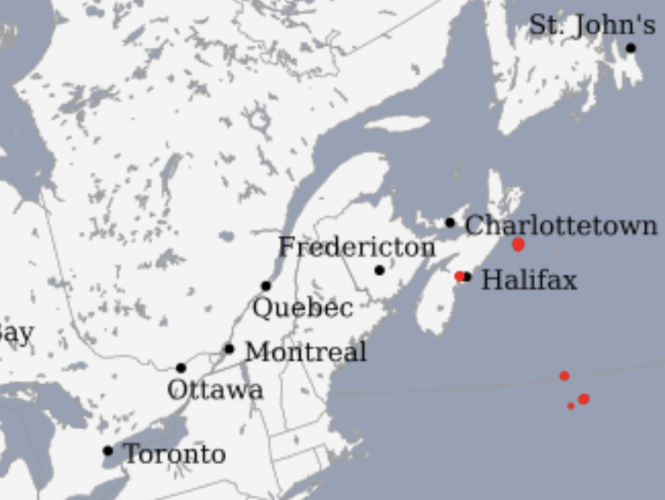As another storm hits, Halifax scientists explain thundersnow phenomenon
Thunder during snowstorm rare; unclear if climate change to blame

caption
A snowplow works to clear a West End Halifax street after a winter storm January 14 and 15.For the second straight Friday night, Halifax was being hit with a wintry mix of weather.
The storm unleashed rain, ice pellets and snow, with winds gusting near 100 km/h.
And once again, the sky lit up with stray lightning flashes.
Last weekend delivered a similar mix, and Haligonians were surprised to hear thunder during the evening’s snowfall, a rare phenomenon known as thundersnow.
“I was in my room and I saw flashing lights in my window and I looked up and I was like ‘that was weird’ and then about, three seconds later just super super loud thunder that was very close,” said Halifax resident Brady Saunders, speaking about last week’s storm.
“My whole family was pretty surprised to see that,” said Dalhousie professor Manuel Helbig about the thundersnow.
Helbig teaches in the department of physics & atmospheric science, studying land-atmosphere feedbacks, among other aspects of meteorology.
Helbig explained that thunder and lightning is caused by the friction between ice and water molecules found in cold and hot air. What makes thundersnow so rare is that during the winter, when snowstorms are happening, there is often too little hot air to cause this kind of friction.

caption
In this screenshot of Environment Canada’s lightning map, lightning strikes are shown in the latest East Coast storm on January 14.The average amount of cloud-to-ground lightning strikes that occur in Canada during December and January is nearly zero, according to Environment Canada.
Helbig referred to a rainstorm earlier this month that featured thunder and lightning. That, coupled with last week’s thundersnow, is twice the amount of lightning strikes than the entire country experiences on average during September, a much warmer month.
So is climate responsible for the increase in winter thunder?
Helbig noted that it can’t be said for certain if climate change is leading to an increase in thundersnow.
“One of the issues is because it’s so rare, we still have a lot less observations of these kinds of events. Just because the sample size is so small,” said Helbig.
Halifax climate scientist Jeffrey Taylor also said that not enough research has been done on thundersnow to determine if climate change is impacting its frequency or severity. However, he noted that climate change is absolutely affecting the amount of extreme weather that people experience today.
“Extreme weather is something we need to worry about in this changing climate that we’re in right now,” said Taylor.
